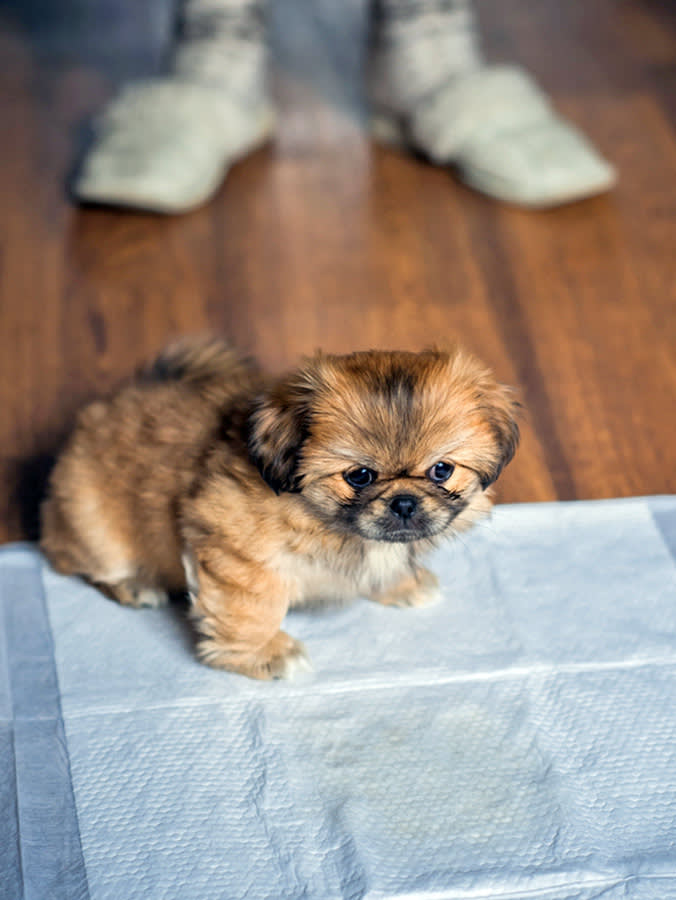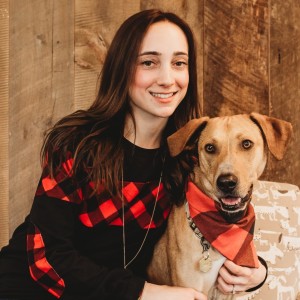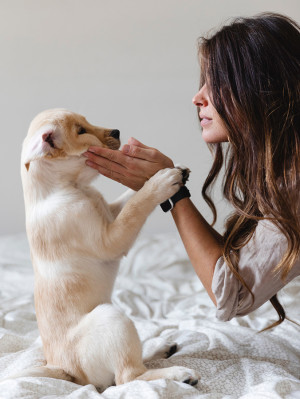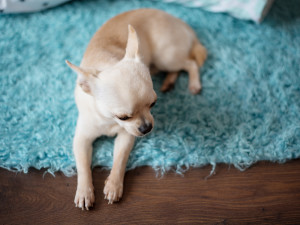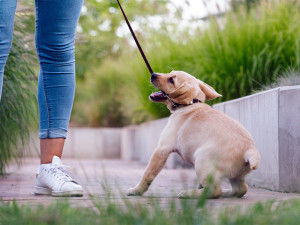How to Train With a Puppy Pad
First step: patience.
In This Article:
How to Train Your Puppy with a Puppy Pad How to Crate Train a Puppy With Puppy Pads Puppy Potty Training Schedule By Age Frequently Asked Questions
Puppy-pad training can be a convenient solution, especially for those living in apartments or with limited outdoor access. By following a consistent and positive approach, you can teach your puppy to reliably use the designated potty area and make house training more manageable.
How to train your puppy with a puppy pad
First, choose the type of puppy pad to buy. The size of your dog will determine what kind of puppy pad you will need. Larger dogs may need a thicker or larger-sized puppy pad; you want it to be large enough for your dog to fit their body on it and thick enough to absorb their mess. You can also use newspaper if you would like.
Once you have picked the puppy pad you will be using, pick a location to keep the pad. You want the puppy pad to be in the location where your puppy spends most of their time; this will help with consistency. Next to the pee pad area, you will want to set up a jar with your puppy’s favorite treats, that way you can reward them for a job well done.
How much do you spend on your pet per year?
Allow your puppy to get used to the puppy pad. Let them walk on it and smell it before associating it with going pee. Some young dogs may be afraid or wary of new things. By letting your puppy observe the puppy pad without any pressure, you are setting them up for success. Never allow your puppy to play with the puppy pad; tugging or shredding it is off-limits.
Having a puppy is like having a toddler: You can never take your eyes off them. Always keep a close eye on your puppy especially during the beginning stages of potty training.
How to crate train a puppy with pads
You should not put pee pads in your puppy’s crate. This encourages them to go instead of waiting until you are home or awake. It’s also a choking hazard if they chew on the pee pads while unsupervised.
If you are crate training your puppy, you should only have them in the crate for the amount of time they can hold their pee or poop. You should take them out frequently and as soon as they wake up in the morning.
Puppy potty training schedule by age
Start by understanding when puppies need to go:
Puppies typically need to go pee every few hours. It’s usually one hour for every month old they are.
Get in the habit of setting an alarm and using a schedule this will help you stay consistent and will allow your puppy to have more success. You can start by placing your puppy on the puppy pad every 30 minutes, increase the time as you get to know your puppy, and how often they need to go.
Puppies will usually need to go within 15 minutes of eating, drinking, sleeping, and playing. During that window place your puppy on the puppy pad. When they go, be sure to reward them.
If you notice your puppy stops doing something they enjoy and begins sniffing around, this may be a sign they need to go. Stop what you are doing, place them on the puppy pad, and wait. After, reward them for going pee.
Consistency is key.
As your puppy receives more positive repetitions of using the pee pad and getting a reward, they will build an understanding of what the puppy pad is for.
If your puppy goes over to the puppy pad and independently uses it for their bathroom, give them an extra special reward. (Example: a few extra treats, a bit more excitement, and pets when they are done.)
While your puppy is learning this behavior keep the puppy pad in the same place. Only once your dog is independently using the puppy pad consistently should you move it to a new place. Start by moving it only a foot or two over at a time, and always show your puppy the new spot you moved the puppy pad.
Never punish your puppy for an accident. If possible, interrupt your puppy when they start going somewhere they shouldn’t, and move them to the pee pad. They will begin to make the connection. When interrupting your puppy, be sure not to scare them or use anger. Try to do it as light and calm as possible.
Following a consistent routine and keeping a close eye on your puppy will help you successfully pad train your puppy with ease.
FAQs (People also ask)
How do you potty train a puppy?
To potty train a puppy, place them on their puppy pad shortly after they’ve finished eating, drinking, sleeping, or playing, and allow them to go pee or poop on the pad. Once they’re finished, reward them for a job well done.
What is the best puppy potty training schedule?
You can start by placing your puppy on the puppy pad every 30 minutes, and increase the time as you get to know your puppy and learn how often they need to go.
Are puppy pads bad?
Puppy pads are a reliable tool to use while potty training your puppy. Alternately, you can use newspaper.
